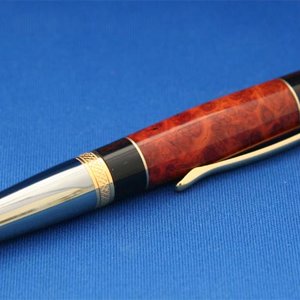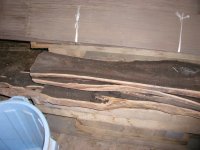ed4copies
Local Chapter Manager
I am posting this because I am reading a lot of turners are making ebony pens.
As a newbee, in 1995, I made dozens of ebony slimlines and took them to several shows. One show was outdoors in mid-July--I displayed about a dozen ebony and a similar number of pink ivory pens. Temp was near 100 degrees. By mid-afternoon, a customer commented, "Why do you show all these pens with cracked bodies?"
He was correct--they were not cracked when I put them out, but nearly all were cracked after being in the heat (NOT direct sunlight) for 6 hours. Those were the last pens I made from ebony or pink ivory.
If you want that "look", consider blackwood--it is less likely to crack.
Alternatively, realize a black resin will look VERY similar and it is unlikely to crack.
Hopefully, this practice will save you from losing a bunch of pens that took hours to make and finish!!
FWIW,
Ed
I encourage you to comment below--what has your experience been??
As a newbee, in 1995, I made dozens of ebony slimlines and took them to several shows. One show was outdoors in mid-July--I displayed about a dozen ebony and a similar number of pink ivory pens. Temp was near 100 degrees. By mid-afternoon, a customer commented, "Why do you show all these pens with cracked bodies?"
He was correct--they were not cracked when I put them out, but nearly all were cracked after being in the heat (NOT direct sunlight) for 6 hours. Those were the last pens I made from ebony or pink ivory.
If you want that "look", consider blackwood--it is less likely to crack.
Alternatively, realize a black resin will look VERY similar and it is unlikely to crack.
Hopefully, this practice will save you from losing a bunch of pens that took hours to make and finish!!
FWIW,
Ed
I encourage you to comment below--what has your experience been??


